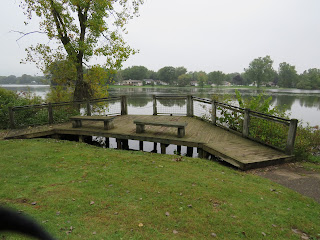I’m hiking next to the Pine River millpond in Alma’s Conservation Park early on a foggy, snowless Christmas morning. A short distance ahead, I am pleased to come face to face with a well- camouflaged Eastern Screech Owl. These small nocturnal birds-of-prey are often heard but rarely seen. Their diet includes small birds and mammals, reptiles, insects, crayfish, and earthworms. Like other owls, they regurgitate pellets that contain indigestible fur and bones; finding these pellets (stock photo) beneath a tree may be one clue to an owl's presence. While typically found in wooded parks like this, they tend to avoid dense forests frequently inhabited by much larger Great Horned Owls (stock photo), which readily prey upon them. Continuing west along the steep bank, I pause at one of the overlooks to observe a large gaggle of geese congregating on the semi frozen millpond. Turning south, I pass a small frozen marsh and the Girl Scout cabin before stopping to notice some Xmas-colored British Soldier lichens. Nearby, I spot large patches of dead Bergamot stalks, pick one of the dried seed heads and crush it to inhale the fragrance. Near the south end of the park, I follow the path eastward as the rising sun shines through the stark landscape. Continuing east across a swath of tall prairie grass, I enter a section of the park dominated by aging conifers where I look up to see a few berries on a vine of American Bittersweet. On the ground nearby, I spot a few Oyster fungi occupying a fallen log. Continuing on the meandering path that is also used by mountain bikers, I stop to watch a family of deer retreating into the far woods. Looping back to the west, I pass some leaf litter containing rarely seen Chinkapin Oak leaves and pause at the Eyer Bird Hut. While not seeing any birds at the feeders, I do spot a perching Red Squirrel waiting for me to leave so it can feast on seeds and grains. Making my way back to the car, I see some leafless vegetation with lingering fruit of Buckthorn and Viburnum. Back in the car, I reflect on another year of wonderful nature hikes and look forward to 2020 as I discover new adventures in the wild.
Christmas sanctuary
No windows or walls
No carol music playing
Only a Chickadee calls
Christmas sanctuary
Choir of gathering geese
Gratitude for solitude
Planet Earth at peace
Christmas sanctuary
No ringing silver bells
Early morning hike
Mother Nature dwells
D. DeGraaf
D. DeGraaf


















